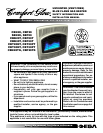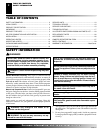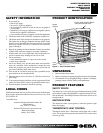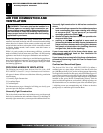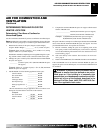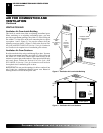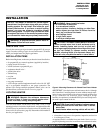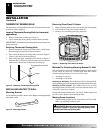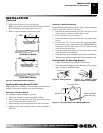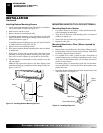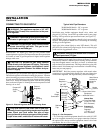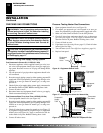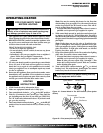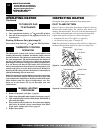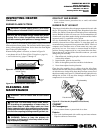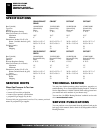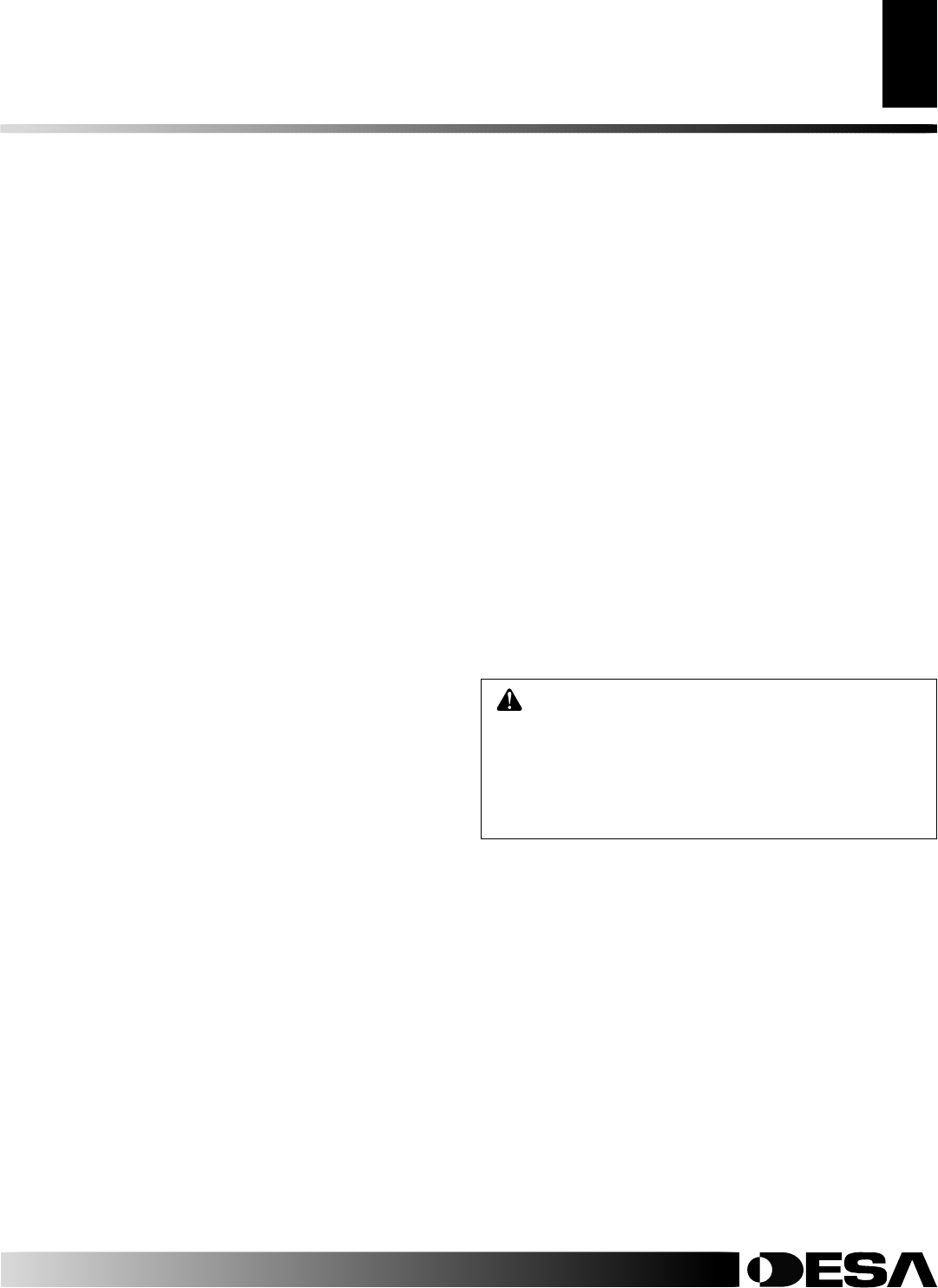
107882-01H
For more information, visit www.desatech.com
For more information, visit www.desatech.com
5
5
AIR FOR COMBUSTION AND
VENTILATION
Continued
DETERMINING FRESH-AIR FLOW FOR
HEATER LOCATION
Determining if You Have a Confined or
Unconfined Space
Use this work sheet to determine if you have a confined or unconfined space.
Space: Includes the room in which you will install heater plus any adjoining
rooms with doorless passageways or ventilation grills between the rooms.
1. Determine the volume of the space (length x width x height).
Length x Width x Height = ___________ cu. ft. (volume of space)
Example:
Space size 20 ft. (length) x 16 ft. (width) x 8 ft. (ceiling
height) = 2560 cu. ft. (volume of space)
If additional ventilation to adjoining room is supplied with grills or open-
ings, add the volume of these rooms to the total volume of the space.
2. Multiply the space volume by 20 to determine the maximum Btu/Hr
the space can support.
__________ (volume of space) x 20 = (Maximum Btu/Hr the space
can support)
Example:
2560 cu. ft. (volume of space) x 20 = 51,200 (maximum
Btu/Hr the space can support)
3. Add the Btu/Hr of all fuel burning appliances in the space.
Vent-free heater _____________ Btu/Hr
Gas water heater* _____________ Btu/Hr
Gas furnace _____________ Btu/Hr
Vented gas heater _____________ Btu/Hr
Gas fireplace logs _____________ Btu/Hr
Other gas appliances* + _____________ Btu/Hr
Total = _____________ Btu/Hr
* Do not include direct-vent gas appliances. Direct-vent draws com-
bustion air from the outdoors and vents to the outdoors.
Example:
Gas water heater _____________ Btu/Hr
Vent-free heater + _____________ Btu/Hr
Total = _____________ Btu/Hr
WARNING: If the area in which the heater may be
operated is smaller than that defined as an uncon-
fined space or if the building is of unusually tight
construction, provide adequate combustion and ven-
tilation air by one of the methods described in the
National Fuel Gas Code, ANSI Z223.1/NFPA 54 Sec-
tion 5.3
or applicable local codes
.
4. Compare the maximum Btu/Hr the space can support with the actual
amount of Btu/Hr used.
__________________ Btu/Hr (maximum the space can support)
__________________ Btu/Hr (actual amount of Btu/Hr used)
Example:
51,200 Btu/Hr (maximum the space can support)
60,000 Btu/Hr (actual amount of Btu/Hr used)
The space in the above example is a confined space because the actual Btu/Hr
used is more than the maximum Btu/Hr the space can support. You must
provide additional fresh air. Your options are as follows:
A. Rework worksheet, adding the space of an adjoining room. If the
extra space provides an unconfined space, remove door to adjoining
room or add ventilation grills between rooms. See Ventilation Air From
Inside Building, page 6.
B. Vent room directly to the outdoors. See Ventilation Air From Out-
doors, page 6.
C. Install a lower Btu/Hr heater, if lower Btu/Hr size makes room unconfined.
If the actual Btu/Hr used is less than the maximum Btu/Hr the space can
support, the space is an unconfined space. You will need no additional fresh
air ventilation.
40,000
20,000
60,000
AIR FOR COMBUSTION AND VENTILATION
Determining Fresh-Air Flow For Heater Location



